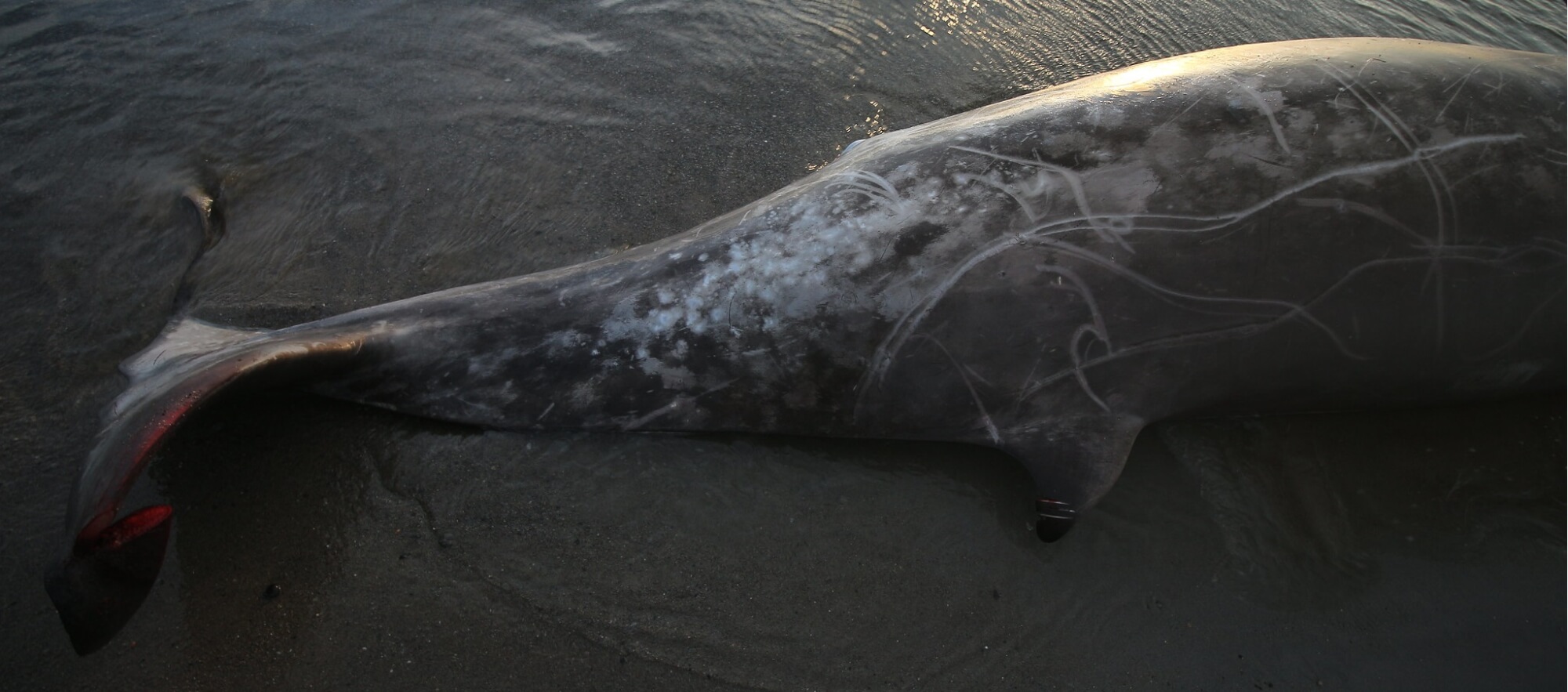Are you familiar with beaked whales? If the answer is “no”, you are probably not alone. Even researchers know relatively little about these mysterious cetaceans that live in the high seas and feed at great depths. What little we do know about them, however, is fascinating. The following paragraphs provide a brief overview of these enigmatic cetaceans of the deep.
1. Beaked whales are not in the same family as dolphins
In fact, beaked whales represent a family of their own, with more than 20 species described to date. Although their snouts and overall profile are often reminiscent of dolphins, beaked whales and dolphins belong to different families. In fact, they are taxonomically closer to sperm whales than they are to dolphins!
2. Depending on the species, beaked whales measure anywhere between less than 4 metres and 13 metres
The largest species of beaked whale known to date is the Baird’s beaked whale, some of which have been observed to reach nearly 13 metres in length, while adult pygmy beaked whales – also known as Peruvian beaked whales – are estimated to measure 3.9 metres on average.
3. Une baleine à bec détient le record de profondeur de plongée chez les cétacés
In 2014, using a satellite tag, researchers were able to observe a group of beaked whales dive to a depth of 2,992 metres, the equivalent of nearly ten times the height of the Eiffel Tower, which, as far as we know, earns it the distinction of the deepest-diving marine mammal. This is more than the record observed for its sperm whale cousin, which is no more than 2,000 metres. Sperm whales and beaked whales are likely equally good divers, however, as they all feed on prey found at great depths.
4. They are fond of squid and other cephalopods
For most species of beaked whales, more than half of their diet is made up of cephalopods (article in French), i.e. invertebrates in the squid and octopus families. Skillful hunters, beaked whales catch their prey by slurping them up given the almost complete absence of teeth in their mouths. Moreover, it is believed that the two folds under their throat that are characteristic of this group of species are used precisely for sucking up prey.
5. We are still discovering new species
No fewer than two new species of beaked whales have reportedly been observed in the past two years. Last year, a team of researchers on an expedition with the organization Sea Shepherd reportedly observed a beaked whale off the west coast of Mexico whose acoustic and physical characteristics appear to differ from any previous sightings. Researchers believe it represents a new species. A species of beaked whale in the genus Berardius, previously believed to be a subspecies of the Baird’s beaked whale, was also identified off Japan by a team of researchers in 2019.
6. Even if they are toothed whales, they have practically no teeth
In the majority of cases, only adult males have functional teeth (several females and juvenile males have vestigial teeth under their gums), and usually only two, located on their mandible, or lower jaw. However, two genera of beaked whales are exceptions to this rule: adult whales of both sexes of the Berardius type have four teeth in their lower jaws, while males and females of the genus Tasmacetus feature a mouth lined with teeth in both their upper and lower jaws. These teeth are believed to be used for aggression between males rather than for food.
7. In several species of beaked whales, males are covered in scars
During the mating season, males of several species in this family are likely to inflict serious injuries on one another with their teeth. What is the purpose of these clashes? To gain access to females in order to reproduce.
8. Not much is known about beaked whales!
Beaked whales are pelagic rather than coastal, which means they live far offshore. The distance they keep from the coast and the fact that they dive for long periods might partly explain why these animals are so seldom observed, and therefore so poorly known compared to other families of whales. Some species also tend to steer clear of boats, and most produce small, difficult-to-spot spouts, making them particularly challenging to observe. Several species have never even been observed alive, only as carcasses.









